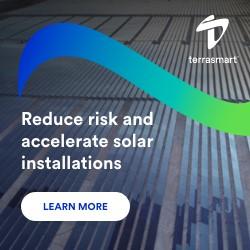Maximizing Solar Energy Efficiency with Smart Technology
.jpg)
The renewable energy sector has transformed by integrating smart technology, significantly enhancing solar energy generation, electricity storage, and grid compliance. Today, solar installations go beyond merely harnessing energy; they incorporate advanced technologies like mobile app connectivity and bidirectional energy flow, improving efficiency, transparency, and grid stability.
According to a 2021 report by the International Energy Agency (IEA), global solar PV capacity is expected to reach over 4,500 GW by 2050, driven by technological advancements and policy incentives. These innovations are key to improving energy efficiency and reducing carbon emissions.
Modern solar energy systems are equipped with smart inverters and monitoring software that allow homeowners and businesses to track energy generation and consumption in real-time. A study published in Renewable Energy found that real-time monitoring of solar panels improved energy efficiency by 15% through optimized usage patterns.
By connecting to mobile apps, users can monitor electricity usage, battery charge levels, and energy flow between solar panels, storage units, and the grid. This transparency empowers users to optimize energy consumption patterns, reducing waste and lowering electricity costs.
Mobile monitoring apps can also send alerts about system maintenance needs, ensuring optimal panel performance. Rigorous testing frameworks for such mobile platforms ensure compliance with international standards such as the IEC 61724 PV system performance monitoring standard (International Electrotechnical Commission, 2019).
Electricity storage plays a vital role in maximizing the efficiency of solar energy. Advanced battery systems, such as lithium-ion and solid-state batteries, allow surplus solar power to be stored during peak demand or nighttime hours. These efficient storage solutions reduce dependence on the grid and serve as a reliable backup during power outages.
The U.S. Department of Energy highlights that lithium-ion batteries have seen a 97% cost reduction since 1991, making them the dominant storage choice for residential and commercial solar systems. A 2022 Nature Energy study also found that lithium iron phosphate (LFP) batteries provide a safer and longer-lasting storage alternative than traditional lithium-ion batteries.
Compared to sunnier states like Hawaii or Texas, storage is especially beneficial in colder regions with limited sunlight, such as Missouri or New York. Additionally, stored solar energy can power electric vehicles, reducing the need to draw electricity from the grid and further enhancing sustainability.
The Convergence of Solar Energy and Electric Vehicle Integration
Grid compliance is critical in successfully integrating solar energy systems, ensuring they operate safely, efficiently, and harmoniously with existing power infrastructure. Renewable energy installations must meet national and regional standards to maintain grid stability, protect equipment, and safeguard public safety.
Key compliance considerations include:
- Voltage Regulation: Solar systems must maintain stable voltage levels to prevent fluctuations that could destabilize the grid. According to the IEEE 1547 standard, solar inverters must support voltage regulation and ride-through capabilities for grid disturbances.
- Power Factor Correction: Smart inverters can manage power factor, ensuring efficient energy transfer with minimal losses.
- Frequency Control: Maintaining grid frequency within acceptable ranges is essential for preventing disruptions. Solar systems must be capable of adjusting output in response to frequency variations.
- Harmonic Distortion Management: Advanced inverter technologies help minimize harmonic distortions, which can interfere with electrical devices and degrade grid performance.
- Safety Standards: Compliance with protocols such as anti-islanding protection ensures solar systems automatically disconnect during grid outages, preventing power surges and backfeeding risks.
The increasing synergy between solar energy systems and EV charging infrastructure is a powerful step toward greater sustainability and energy independence. Solar-powered EV chargers provide an eco-friendly solution by allowing vehicles to be charged directly from renewable energy sources, significantly reducing carbon emissions and energy costs.
Advanced solar-integrated EV charging systems offer enhanced capabilities, including:
- Smart Charging Optimization: Integrated platforms can schedule charging sessions during peak solar generation hours.
- Mobile App Integration: Modern EV chargers can be paired with mobile apps, enabling users to monitor energy consumption, battery status, and charging schedules.
- Payment Security: Secure digital payment gateways ensure transaction reliability for public solar-powered EV charging networks.
- Load Balancing: Advanced systems balance energy distribution between solar generation, battery storage, and EV charging needs, optimizing overall efficiency.
Manufacturers and service providers can deliver safe, efficient, and user-friendly solutions that drive the transition toward a cleaner, more sustainable energy ecosystem by ensuring rigorous quality assurance across solar energy and EV infrastructure.
As solar energy continues to evolve, integrating smart technologies like mobile app connectivity, electricity storage, and grid feedback mechanisms will play a pivotal role in expanding renewable energy adoption. The renewable energy sector can advance toward a more efficient and sustainable future by emphasizing process optimization and quality assurance.
With over 10 years of experience in software quality assurance, automation, and project management, Prachit Kunari has led cross-functional teams across industries like EV charging, media streaming, and payment systems. His background has given me a strong foundation in quality assurance frameworks, automation techniques, and project evaluation, allowing me to assess projects with both technical depth and creative problem-solving in mind.
As a Certified SAFe® Practitioner with expertise in Agile methodologies, I excel at providing constructive feedback that helps teams refine and optimize their projects.
Comments (0)
This post does not have any comments. Be the first to leave a comment below.
Featured Product

